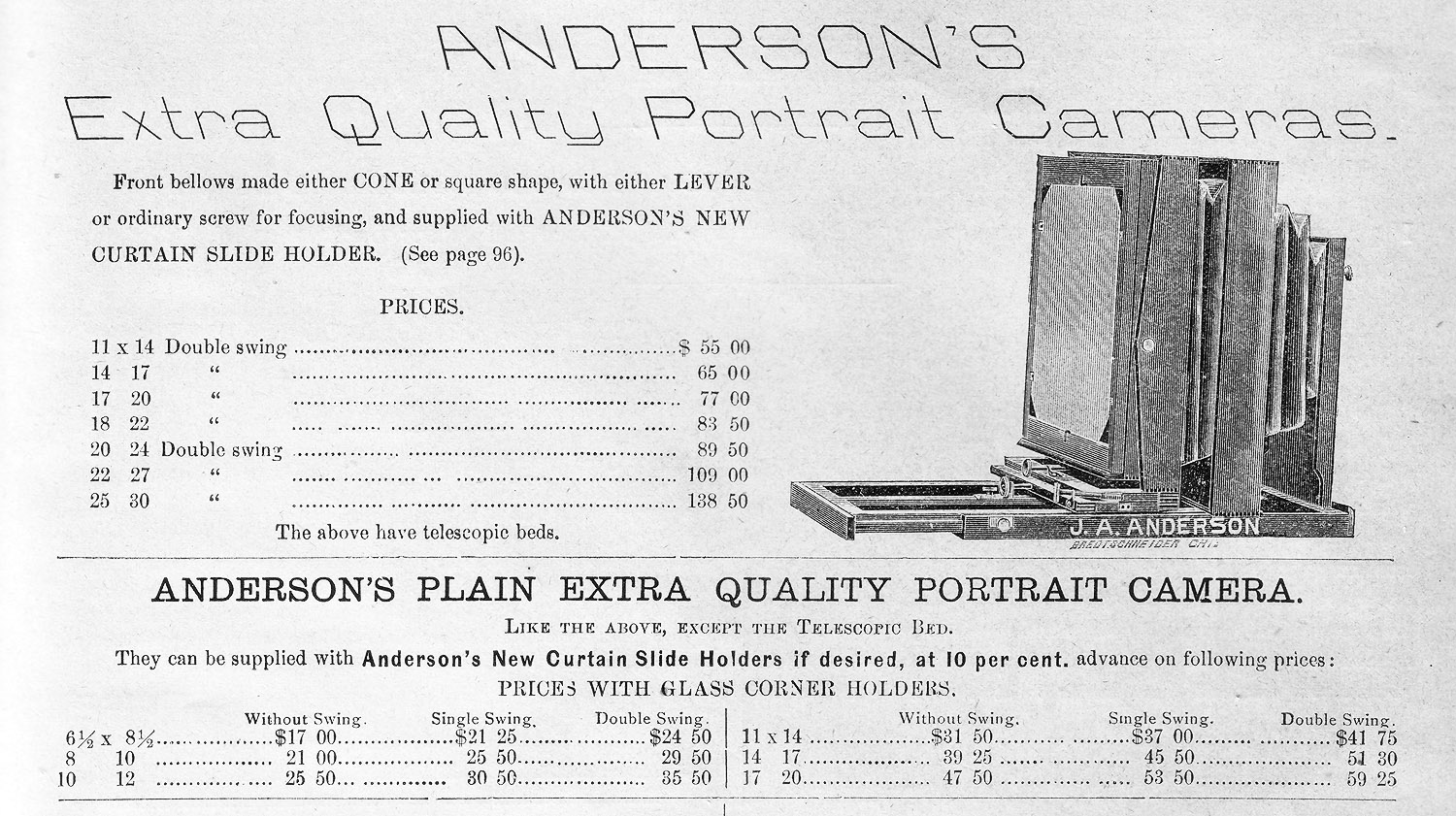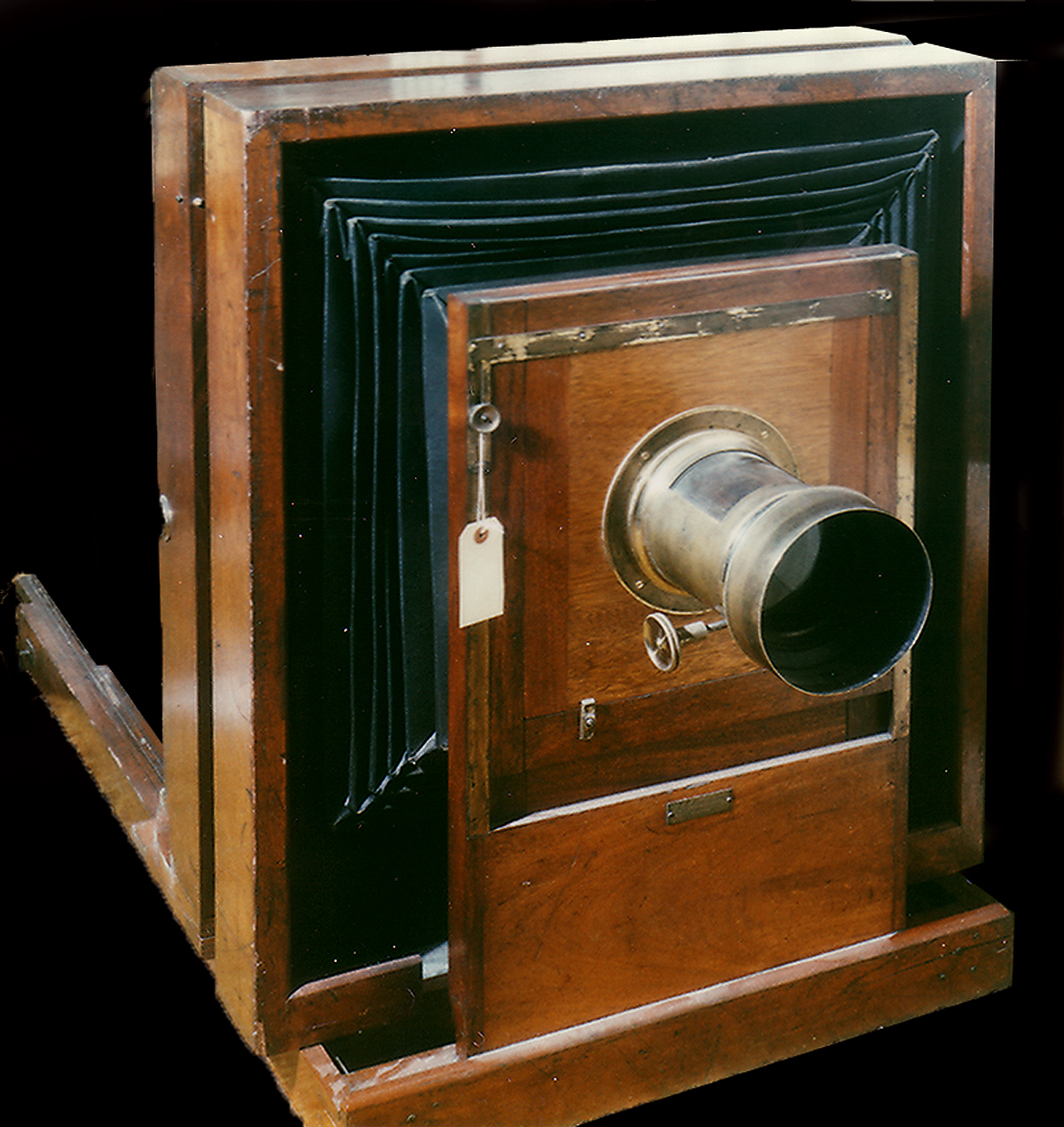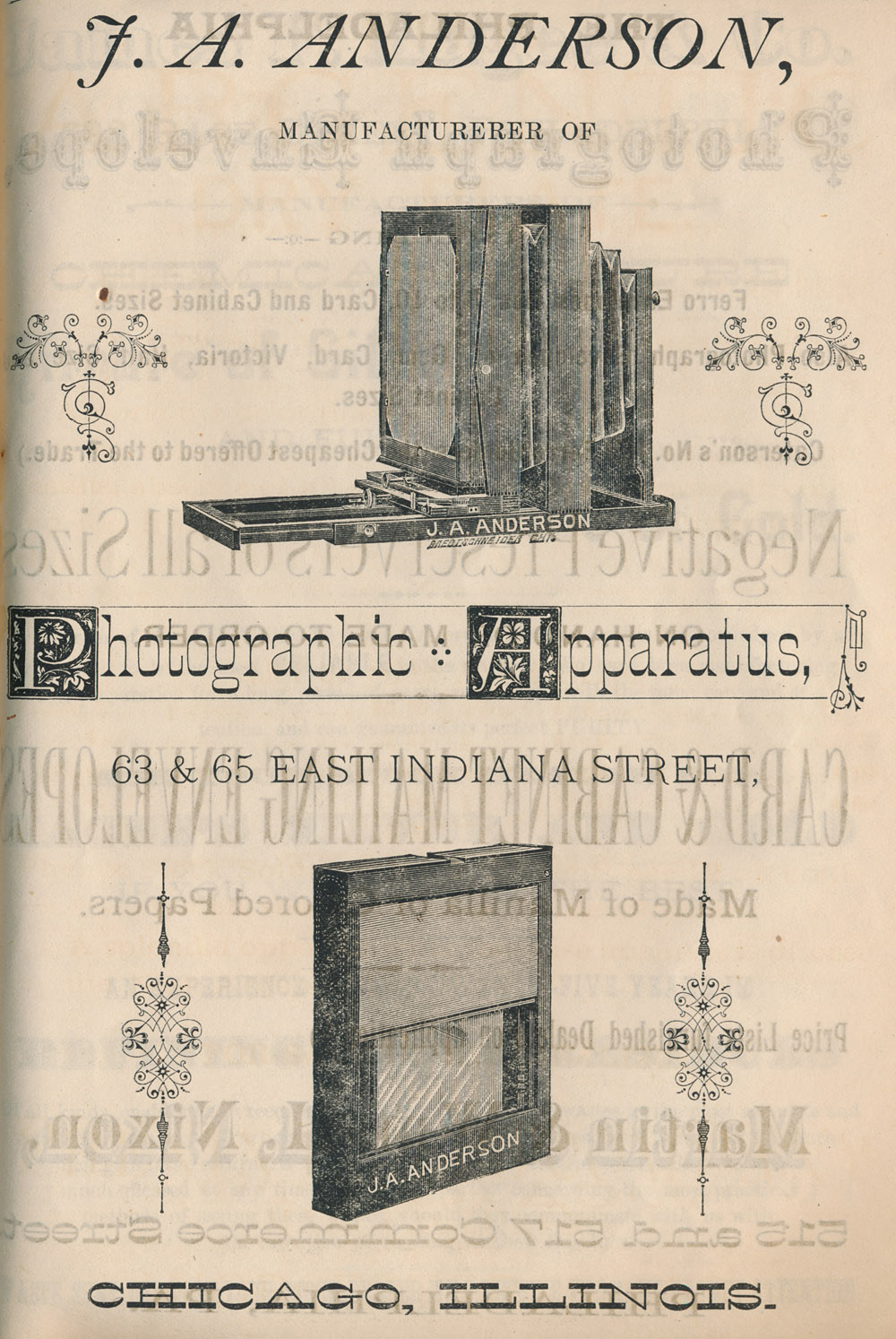J. A. Anderson & Co., (Chicago, IL)
Extra Quality Portrait Camera - c. 1880's-1890's
Jonas A. Anderson (November 1842 - September 17, 1911). He immigrated from Norway to the United States in 1849, settling in Chicago in 1851. He founded J. A. Anderson & Co. in 1870, manufacturing photographic apparatus. His son, Walter E., took over the company by 1900.
Origin, Growth, and Usefulness of the Chicago Board of Trade, Historical Publishing Co., 1885-6, page 282:
J. A. Anderson, Manufacturer of Photographic Apparatus, Nos. 63 and 65 East Indiana Street.
- A prominent house in Chicago engaged in the manufacture of all kinds of photographic necessaries and appliances is that of Mr. J. A. Anders, Nos. 63 and 65 East Indiana Street. This business was founded by the present proprietor in 1870, at No. 212 Illinois Street, and in the following year the premises were destroyed by the great fire. Mr. Anderson promptly recommenced business at his present location. The premises are very commodious and are equipped with all the latest improved machinery and appliances necessary for the systematic production of photographic apparatus, employment being given to about forty highly skilled and experienced operatives. The photographic supplies manufactured by Mr. Anderson are unsurpassed for quality, ingenuity of construction, workmanship, and general excellence, by those of any other first-class firm in this country or Europe, and in consequence of their unsurpassed superiority their sale is annually increasing. The system which prevails in the factory indicates the most careful supervision, while the judgment and ability displayed in the manufacture of the photographic apparatus indicate that Mr. Anderson is thoroughly conversant with every detail of this scientific business, and fully acquainted with the wants and requirements of the profession. His is a native of Norway, but has resided in Chicago since 1851, and is greatly respected by the community for his unswerving honor and integrity. The just manner in which this business is conducted, as well as the superior quality and reliability of the stock are guarantees sufficiently obvious why photographers requiring a complete outfit in the trade would do well by giving their orders to this representative house.
In 1900, Anderson & Co. manufactured the Mammoth Railroad Camera, which had a plate size of 4½x8 feet, and was the largest camera ever constructed at that time. The company J. A. Anderson is not listed along with Jas. H. Smith, Burke & James and other photographic suppliers in the December 15, 1901 Factory Inspectors of Illinois.
They appear to have mostly manufactured their own design of cameras, such as Anderson's New View Box, which appears to be a model unique to Anderson. Likewise, their studio cameras, having a configuration similar to many other manufacturers, have details that set them apart from the other manufacturers (see Anderson's Extra Quality Portrait Camera and the Success-like Studio Camera). However, at least one studio view camera extant bears an Anderson metal plate on its front standard and a Scovill Mfg. Co. stamp on the rails. The style of this studio camera appears to be a common Scovill type, the most distinctive feature being a deeply recessed front standard. So, at least in that one case, it appears that Anderson also bought the camera from Scovill, slapped on their own label, and re-sold it. Other studio view cameras marked Anderson are of a different, perhaps their own, design/configuration, e.g., Anderson's Extra Quality Portrait Camera and the Success-like Studio Camera, featured on this web site.
No. 7 Catalogue, T. F. Indermill, St. Joseph, MO, October 1,
1885, p. 95

Notes:
J. A.
Anderson was an early supplier of cameras in the Chicago area. In
addition to studio cameras, he produced the
Anderson New
View Camera and the
Anderson Unknown
Model Name (Front Focus Cone). Anderson cameras are much
rarer than the cameras made by the major New York manufacturers, so it
is likely that the camera above is the largest Anderson still in
existence. Yet two sizes larger than this are listed in the
advertisement. Cameras as large as these were presumably utilized
to produce negatives for large portraits in an era when enlargement
equipment was not prevalent. Many such portraits were printed
lightly, then augmented with charcoal, pastels, or even oil paint to
produce an artistic-looking portrait not requiring an artist.
It is about
the size of a family refrigerator, and, indeed, it was shipped to me in
a refrigerator carton. The easiest way to move it is to remove the
back and the lens board, then stick your head through the lens board
hole from the back and wear it on your shoulders as you walk. References:
20 x 24 double swing (ground
glass 24x24)

No. 7 Catalogue, T. F. Indermill, St. Joseph, MO, October 1,
1885, p. 95
Walzl's Photographic Journal and the Photographer's Friend, Richard
Walzl, pub. (Baltimore, MD) undated c.1886, p. 75
Catalogue of Photographic Sundries, Jas. H. Smith & Co.
(Chicago, IL) Catalog, 1899, p. 3

